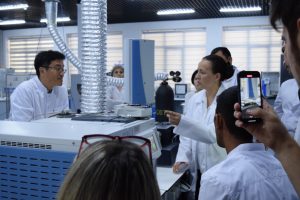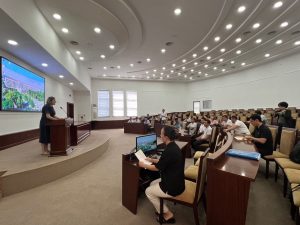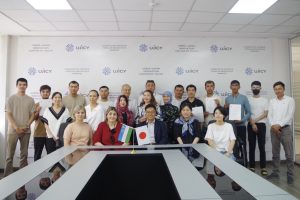The 35th seminar, the 14th seminar of developing young scholars was held on June 12 and 13.
On June 12 and 13, the 35th seminar was held at the Uzbek-Japan Innovation Center of Youth (UJICY) in Tashkent, the capital of the Republic of Uzbekistan, in conjunction with the “Exchange Program for Technological Transfer of Scientific Research on Archaeological Heritage in Uzbekistan” commissioned by the Japanese Agency for Cultural Affairs to the Nara National Research Institute for Cultural Properties. This 35th seminar was also carried out as the 14th Seminar for the Development of Young Researchers in Uzbekistan.
On the first day, following a welcome speech by the UJICY, Dr. Yuka Sasaki gave a practical training on “Scanning Electron Microscope (SEM) Observation of Pottery Impression Replicas,” which involved a practical analysis using the SEM installed at the center.
In the morning of the second day, Dr. Shinya Shoda presented the lecture titled “Analysis of Archaeological Residual Organic Material Using Gas Chromatography” and Mr. Niyoz Rashidov provided an overview of the Samarkand Archaeological Institute. After a friendly luncheon, Dr. Shoda gave a hands-on training session on “GC-MS Analysis of Residual Lipids Extracted from Cooking Pottery.” The participants had the opportunity to use the gas chromatograph-mass spectrometer (GC-MS) also installed at the center.
Twenty-two participants, including UJICY science and engineering researchers, archaeologists, and conservators from Samarkand, Tashkent, and Namangan, engaged in a lively question and answer session from a variety of perspectives. The Nara National Research Institute for Cultural Properties, UJICY, and the Samarkand Archaeoloigcial Institute signed a “Memorandum of Understanding for Academic Cooperation and Exchange” last year, and will continue to conduct exchange programs that take advantage of their respective strengths.






